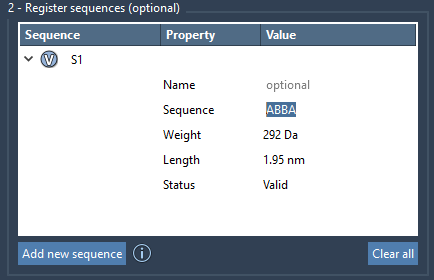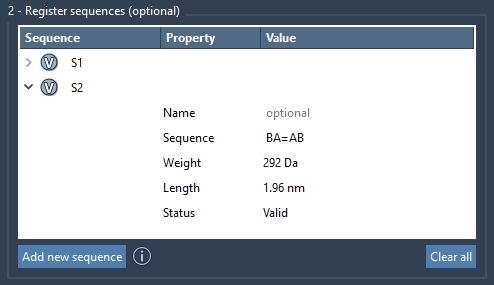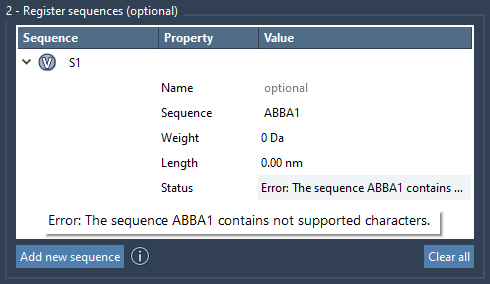When designing synthetic or biopolymers, having precise control over the bond types between monomers is often critical — not just for chemical accuracy, but also for predicting properties like stability, flexibility, or conductivity in downstream simulations.
SAMSON’s Polymer Builder extension includes a helpful feature that lets you explicitly define whether monomers within a sequence are connected via single, double, or triple bonds. This may sound straightforward, but for chemists and molecular modelers working in electronic materials, conjugated systems, or fine-tuned polymer properties, the ability to specify these bond types is a small but essential detail.
Patterning Sequences with Customized Bonds
Let’s say you’ve already defined your custom monomers, each uniquely labeled as A, B, C, etc. Within the Polymer Builder interface, you can register sequences like ABBA or CACB. Even more importantly, you can define how the monomers are connected:
A=B– connect monomerAandBwith a double bond.A#B– connect monomerAandBwith a triple bond.A=B#C– monomerAconnects toBvia double bond, which connects toCvia triple bond.
This control allows more flexibility for designing systems like conjugated polymers, where alternating single and double bonds are essential to maintain suitable electronic properties — think organic semiconductors or photovoltaics.

Combining Sequences and Bond Types
You can go one step further and specify **polymer expressions** that combine multiple sequences and bonding patterns. For example:
|
1 |
S1 + 2*S2 + 3*AB + AB=BA + A#B |
This expression means:
- Use pattern
S1once - Repeat sequence
S2twice - Repeat the
ABunit three times - Attach
ABtoBAwith a double bond - Then connect
AtoBwith a triple bond
This allows users to define complex molecular scaffolds much faster than drawing them atom-by-atom. And because SAMSON shows the predicted molecular weight and approximate length before you generate the structure, you can iterate and validate quickly.

When Does This Matter?
Controlling bond types is vital when you work on:
- Conjugated polymers with alternating bonds
- Rigid or highly flexible chain designs
- Polymeric drugs where bond strength affects cleavage
- Multi-functional materials where regions of rigidity alternate with flexible parts
Using the Polymer Builder to define these patterns programmatically removes the risk of manual modeling errors — especially for large or repetitive sequences.
Validating and Troubleshooting
You can check whether your input is chemically valid by looking at the Status column in the sequence table. Invalid inputs (such as missing monomer IDs or impossible bonding patterns) will be flagged automatically.

This built-in validation speeds up workflows and ensures that your polymers are structurally sound before committing simulation resources.
To learn more about working with monomer bonding in custom polymer sequences, visit the Polymer Builder documentation page.
SAMSON and all SAMSON Extensions are free for non-commercial use. You can download and get started at https://www.samson-connect.net.





